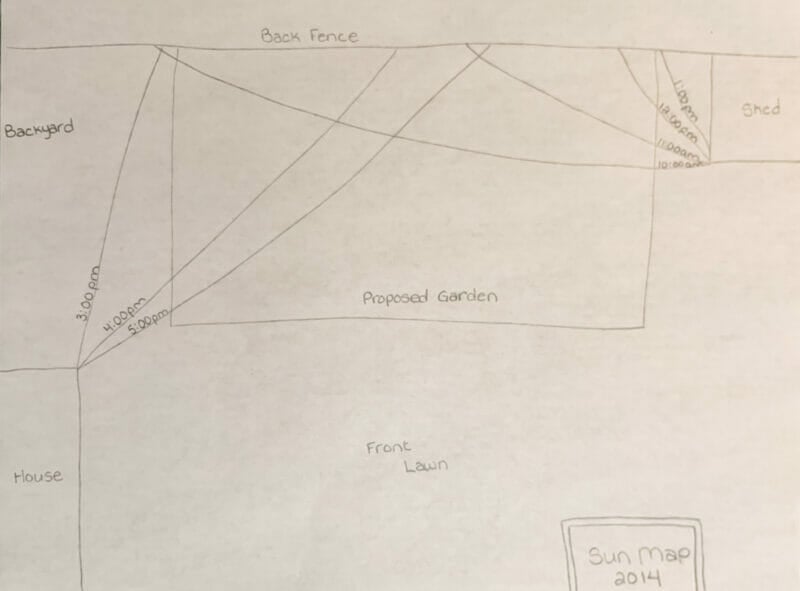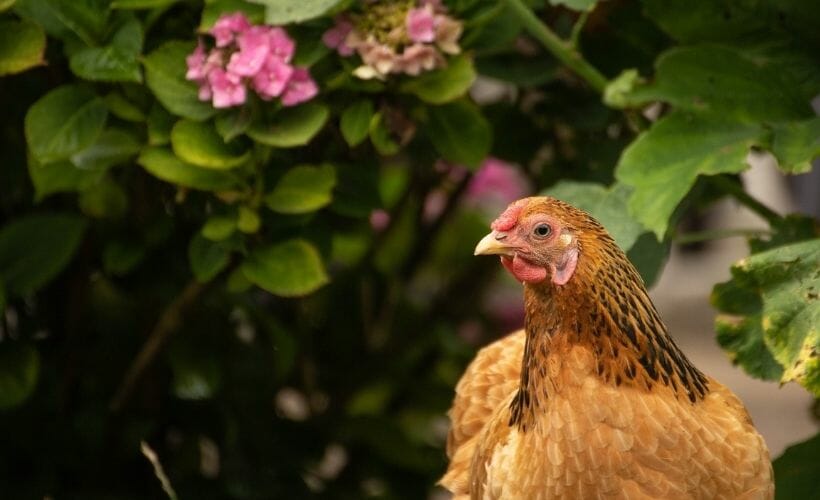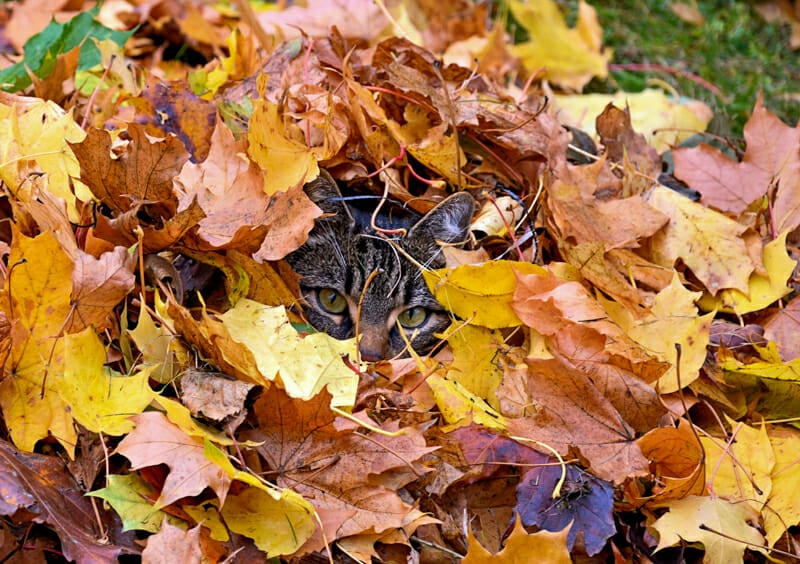Modern Homestead Goals You’ll Actually Achieve [First Year]
Setting goals gives you something to strive for. Learn how to determine the homestead goals for your family’s first year here.

This article was originally posted in November 2014, when I was a brand new homesteader (or wannabe homesteader). I have updated this post regularly over the years to help you on your way to achieving your homestead goals.
I have a dream, and it’s a big one. My dream is to live a simpler life where I do for myself and teach my children the value of taking care of themselves and the world we live in. Basically, I want to homestead and live a life of self-sufficiency.
Starting a modern homesteading lifestyle when you live on slightly less than 1/4 of an acre and are a short jaunt from the heart of your small town’s village can be a daunting task. I started with merely a 10′ x 10′ garden plot, a four-year-old apple tree that still doesn’t produce more than cherry-sized apples, and seven chickens.
I began my journey by making my own cleaning products and line-drying my clothes during the spring, summer, and fall, but I knew I wanted so much more. I knew I had big goals, but I wasn’t sure how to manage them so they wouldn’t overwhelm me.
Learn to Create Achievable Homestead Goals
Keep Your Goal List Manageable (K.I.S.S.)
Although you may feel inclined to do it all right out of the gate, this technique will inevitably lead to overwhelm and burnout.
I want to have a giant orchard! That’s a great goal to have, but maybe start with planting 1 or 2 fruit trees each year. Developing an orchard involves many steps. You need to select a site, create your design, make plant selections, prepare the land, and then plant the trees. That’s a lot of things to get done before you even get fruit. Set a small goal that gets you closer to the big goal.
Push Yourself Out of Your Comfort Zone
If you’ve only ever owned a cat or dog, the idea of a cow might scare the bejeezus out of you. That may be a valid fear, but maybe it’s not. I’m not saying a cow is a great first livestock to bring to your homestead (chickens might be a better start for you; they are the gateway animal), but you should prepare yourself for taking a scary chance. Only if you push yourself out of your comfort zone can you experience new things.
Make Your Homestead Goals Specific
Instead of deciding to set a broad goal such as “make all my own cleaning products,” narrow that down to something along the lines of “I want to make my own all-purpose cleaner and glass cleaner.” Otherwise, how will you know when you can cross that goal off your list?
Break it Down into Baby Steps
Growing all the food your family needs is a lofty ambition that isn’t going to be achieved overnight. If you put that much weight on your shoulders, you’re bound to collapse under all that pressure. Start with growing the produce you spend the most on or purchase most frequently at the grocery store. Once you have a firm grasp on growing these items, you can slowly add more to your plate (pun totally intended).
START!
Nothing will change if you don’t take action. So this is the time! Pull out a piece of paper and brainstorm things that are important to you. Pare those things down into actionable items.
My First-Year Homestead Goals
Keeping it simple, I decided to pull out a sheet of paper and break my big long-term goal into smaller, specific goals. Since it is currently the dead of winter, I figure these goals should be broken down into seasons since, as much as I’d love to, I really can’t go out there and dig out a new garden for salad greens. So here goes my homestead goal list for the year 2014.
My Winter Homestead Goals
These are my goals for my first homesteading winter.
UPDATE I have included links to helpful information in case you share the same goals.
Make a hanging indoor herb garden over the kitchen sink.
Whether you live in the northern part of the world, where it gets super cold for the better half of a year, or in the south, where the climate is pretty moderate and you could garden outdoors any time of year, you should be gardening indoors.
Create the cute “Garlic in a Can” that I pinned on Pinterest.
I cannot find the original pin, but if you are looking to learn how to grow garlic in containers, the video below will show you how.
Finally, make the DIY dishwasher detergent and laundry detergent recipes.
Natural cleaning recipes can be found all over the internet, but being the obsessive person I am, I had to do blind testing on them all and make some tweaks to figure out which worked the best. These are my winning recipes that have been used for several years now.
My most popular DIY cleaning recipes.
Homemade laundry detergent that won’t break your washing machine.
Learn how to make my own shampoo, conditioner, and hand soap.
These goat milk shampoo bars have a generous helping of castor oil to promote a great lathering experience, along with a full amount of goat’s milk for an added creamy and luxurious feel. Shea (or mango) butter helps to slightly harden the finished bars while providing moisturizing properties for the scalp and hair.
This DIY dry shampoo lengthens the time between “regular” shampooing and they’re easy to make.
Figure out how to rig up a clothesline in the laundry room to hang dry during the winter and wet weather.
There are a few tricks I’ve picked up along my clothesline journey, and I’m excited to share these tips and tricks with you today. Yes, line drying clothes can be as simple as flinging your clothes over a line, but with the right technique, you’ll see how amazing line drying really can be. I have a step by step guide to help you use your clothesline properly.
Did you know that you can continue to line-dry your clothes throughout the year and continue to save money? There is even an added bonus for those of us in the northern hemisphere that I refer to as “snow bleaching” for your whites. Learn more about using a clothesline during the winter.
My Spring Homestead Goals
These are my goals for my first homesteading spring.
UPDATE I have included links to helpful information in case you share the same goals.
Create a sun map of my property.
Discover your garden’s sunlight exposure without any fancy gadgets by making a sun map on paper so your plants get their moment(s) in the sun. Learn how to do that here.

Plant three more grape plants along the chicken run fence.
Finding out which plants are chicken-safe and not toxic can be challenging. Find the best chicken-friendly plants to grow in and around your coop.
Build and fill one more herb garden bed.
Hugelkultur is a really neat form of permaculture gardening that makes for the perfect growing conditions for your plants. It’s perfect for growing a variety of things, but it has been phenomenal for growing my herbs. Learn about hugelkultur here.
Plant a “salad bar” under the pine tree of growing doom.
Knowing that you don’t need full sun for all your crops opens up a lot of doors when it comes to planning for your garden. Learn which plants (salad ingredients and more) can grow in shade.
Get the coop where I want it and fill it with MORE CHICKENS (and maybe some ducks and quail).
Those who are working with a limited amount of space may wonder if they can house different types of poultry under the same roof. I have bantams, large fowl, and ducks in one coop. Learn how we make it work.
My Summer Homestead Goals
These are my goals for my first homesteading summer.
UPDATE I have included links to helpful information in case you share the same goals.
Build a second compost bin in the chicken run so I can “cool” the “hot” compost.
Much like peas and carrots, chickens and gardens belong together (though maybe not occupying the same space). Chickens want to work. They want to dig, search, and scratch. Why not put natural behavior to work for you? Discover why you should move your compost bin into your chicken run and how to safely compost with chickens.
Regardless of whether you garden indoors or out, you should be composting. All plants benefit from compost. It can seem overwhelming, but I’m going to simplify the process for you. You’ve got your greens, you’ve got your browns, you’ve got your bin, and you’ve got compost. That’s all it takes.

Plant out two more garden plots based on the results from the sun map.
My property is just under 1/4 acre, and it is forced to fulfill many purposes, from the children’s play area to the poultry farm and gardening area. It’s a lot of work for a little piece of land. However, I can still produce a lot of food for my family and customers. It simply takes some planning and innovation. Learn how to garden on a small scale.
My Autumn Homestead Goals
These are my goals for my first homesteading autumn.
UPDATE I have included links to helpful information in case you share the same goals.
Learn if it’s worth the effort to tap the two maple trees on the property for syrup.
You can tap many types of trees for syrup. Really? That gives me five trees I can tap! There is a long list of non-traditional trees, but here’s the shortlist.
Build a bin for leaf mold for the following year’s garden.
As I put my gardens to bed for the winter, I like to tuck them in with a thick leaf mold blanket. Leaf mold is basically a compost made entirely of broken-down leaves. Where compost is hot and breaks down quickly, leaf mold is cool, slow to break down, and well worth the wait. Learn how to make it here.

What are your homestead’s goals? How can I help?
I am sure as things progress, I’ll be adding to the summer and fall areas, but for now, these seem like very workable goals. I’ll be sure to update this site as things progress.
If you’ve found value in this blog post and enjoyed reading it, why not share it with your Pinterest community? Pin the image below and spread the love!

Do you have dreams that you are working on? Have you broken them down into attainable homestead goals? I’d love to hear what you are doing to improve your homestead experience. If you need help setting homestead goals, subscribe to The Homestead Helper and receive a copy of my workbook, Welcome to the World of Homesteading, for free.
